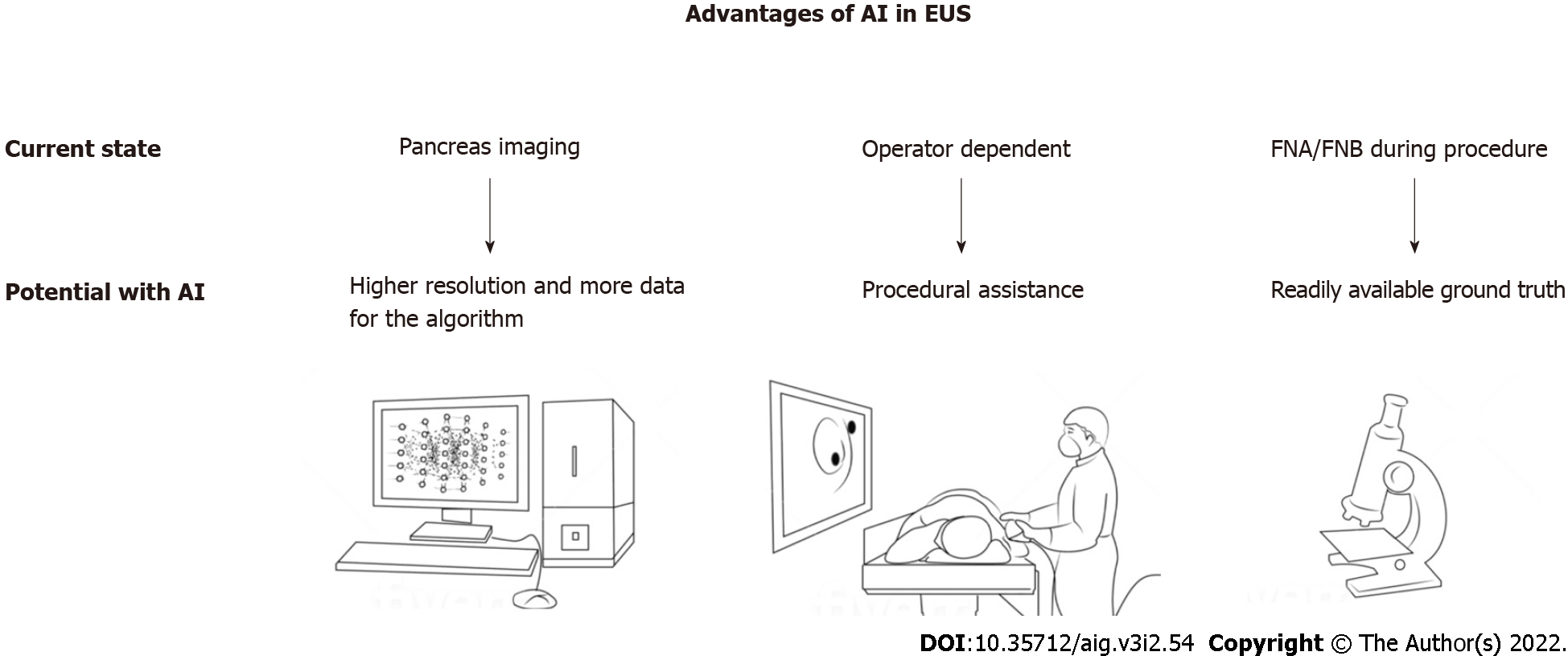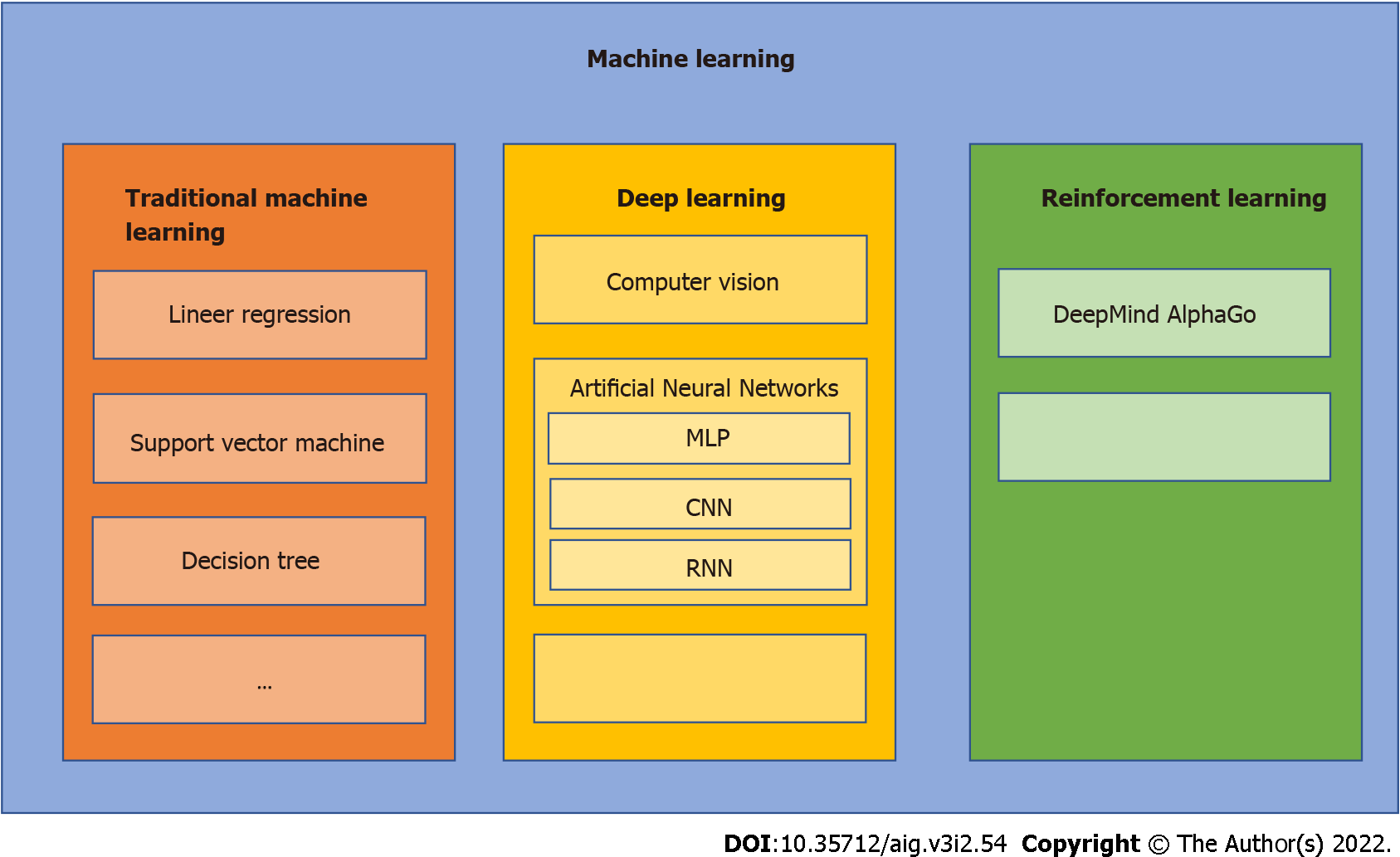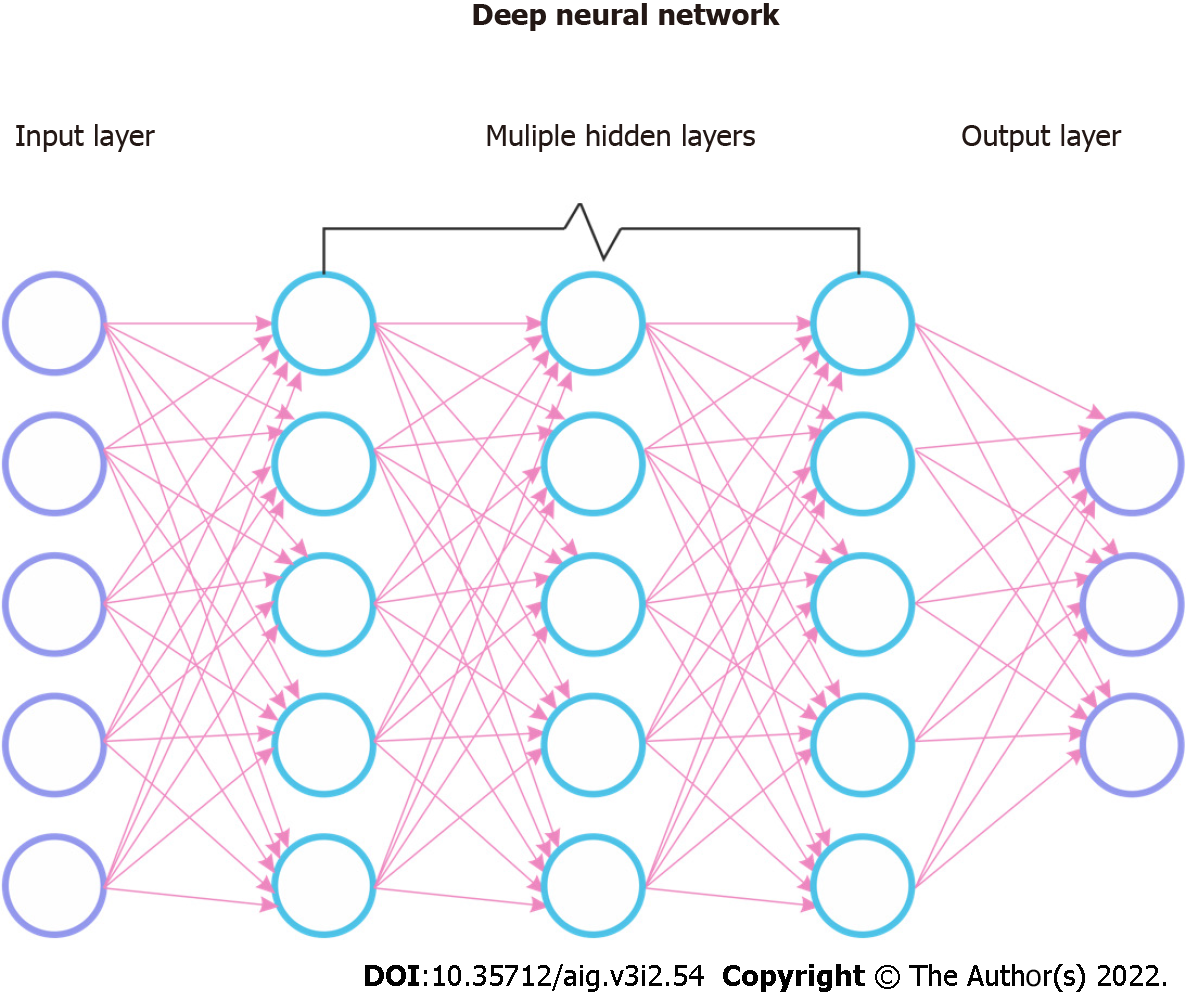Copyright
©The Author(s) 2022.
Artif Intell Gastroenterol. Apr 28, 2022; 3(2): 54-65
Published online Apr 28, 2022. doi: 10.35712/aig.v3.i2.54
Published online Apr 28, 2022. doi: 10.35712/aig.v3.i2.54
Figure 1 Potential benefit of artificial intelligence in pancreatic endoscopic ultrasonography.
Current state of the pancreatic endoscopic ultrasonography (EUS) demonstrates that the procedure yields high resolution pancreatic imaging data, it is operator dependent, and allows acquisition of fine-needle aspiration (FNA) and fine-needle biopsy (FNB). Potentials with artificial intelligence (AI) implementation are utilizing of this higher resolution imaging data for training the algorithms with the readily available histologic ground truth from the FNA and FNB, as well as providing procedural assistance to address operator dependency.
Figure 2 Overview of machine learning domains.
Traditional machine learning algorithms rely on being trained by annotated and processed datasets to perform simpler tasks such as classification and regression. Deep learning algorithms are more autonomous, generally do not require annotation and processing of data for training and can perform more complicated tasks such as image detection and speech recognition. Reinforcement learning algorithms are self-teaching systems that can perform actions and learn by trial and error to achieve the best outcome; they perform most complex tasks such as game playing and learning to walk. CNN: Convolutional neural networks; MLP: Multi-layered perceptron; RNN: Recurrent neural networks.
Figure 3
Design overview of deep neural network model including input, output, and multiple hidden feature-detecting layers.
- Citation: Simsek C, Lee LS. Machine learning in endoscopic ultrasonography and the pancreas: The new frontier? Artif Intell Gastroenterol 2022; 3(2): 54-65
- URL: https://www.wjgnet.com/2644-3236/full/v3/i2/54.htm
- DOI: https://dx.doi.org/10.35712/aig.v3.i2.54















